Trying out colour developing really got my creative juices flowing and I’ve had a fair few experimental ideas that I want to try out. I warn you now, this is not an article for those who detest the idea of deviating from the straight and narrow when it comes to their photography and developing!
I have always been experimental in my photography. Whilst I love just taking pictures, I also love to dabble in methods that produce unpredictable results, like film souping. I noticed that every time I developed film I had to actively stop myself from dancing and jiggling around, in fear of agitating too aggressively. And so the idea of a dance experiment formed in my mind.
Experiment outline
This is not remotely scientific but there were a few factors that I felt I should control in this experiment to make it relatively fair as a comparison.
- I used the same film stock, Kodak Gold, for each of my experimental rolls.
- I used the same camera and lens combo, a Canon EOS 1000FN and the kit lens.
- I took images in roughly the same conditions, the three rolls were shot within a two week period in generally bright sunshine bar a couple of each roll which were taken inside with window light.
The idea was to shoot each roll the same but to develop whilst dancing to progressively faster music. I had ideas in my head of the final one being to Andrew WK’s Party Hard but alas I also wanted to film it for YouTube so I used the music of a friend of a friend, Alex. If you’d like to hear his music you can find it on Spotify under Brutox.
Whilst the experiment was born out of my need to dance while developing, I also wanted to explore the idea of bringing together my hobby (photography), which improves my mental health, with physical exercise which releases serotonin, the feel good hormone. I have noted previously that coming back to photography during depression helped me to start noticing what was around me. I noticed shapes and patterns in trees whilst I was walking instead of constantly being inside my own head. Therefore I shot these rolls whilst out walking with my dog, with a few shots being taken when we had not long returned home and when I came to develop, I put on the music, set the timer and began to dance in whatever way my body felt like moving.
How the experimental developing went
I’m including below some images of the negatives.
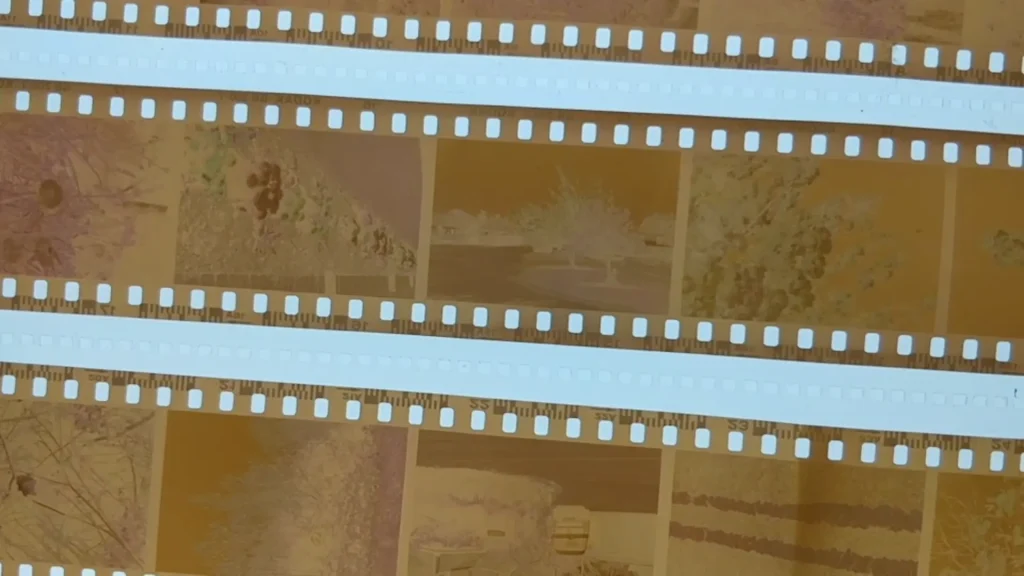
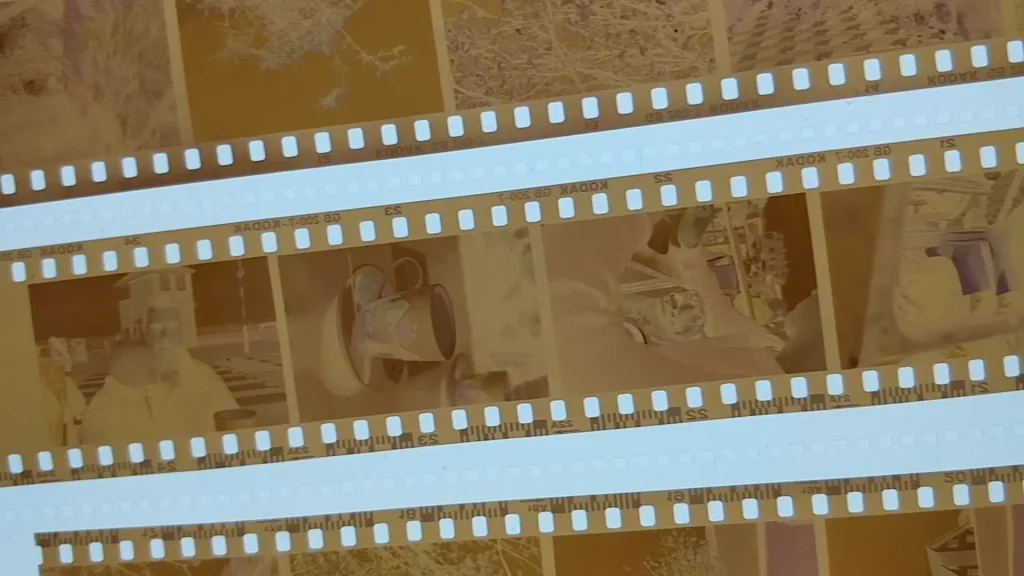
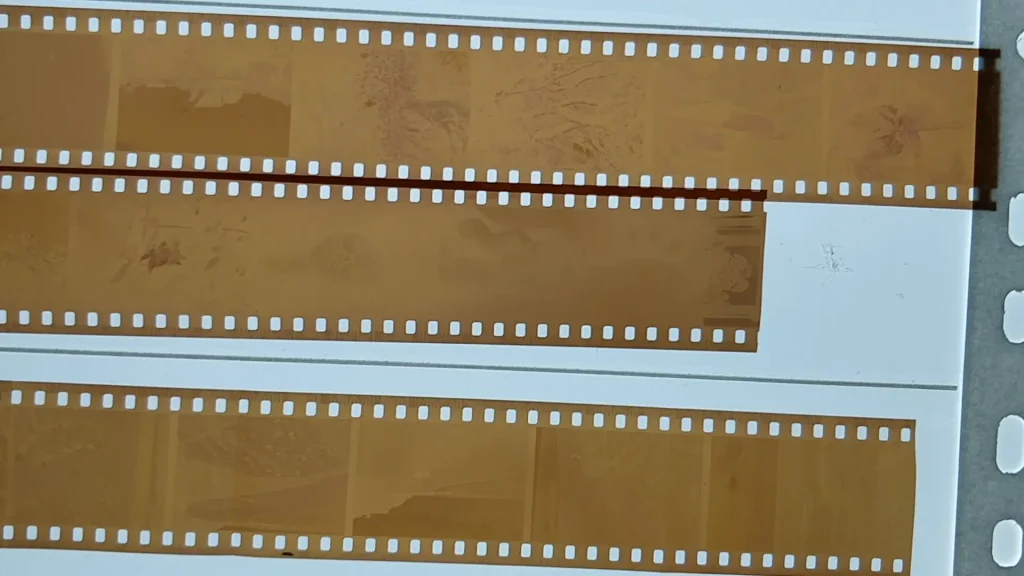
I developed these but sent them off for scanning as I have not the time or energy to learn to convert colour negatives myself. This means that initially all I had was the negatives to judge the effects of the developing. My first conclusion was that there didn’t seem to be too much wrong with rolls one and two but roll three showed some serious distortion/appeared to be massively overdeveloped.
I did film this experiment, you can watch the full series on YouTube here, so what surprised me is that the tempo for roll two and three didn’t appear to me to be too dissimilar and yet roll two was closer to roll one than roll three in appearance.
And so the final scans. It would be a bit too much to include all the photos from each roll so I’ve chosen a couple of noteworthy images to talk about from each roll.
Roll one
Surprisingly there were 4 images on this roll all of which would have been in the center of the developing tank which are severely fogged. Ordinarily this wouldn’t have surprised me as I was agitating more than recommended but this is the only roll of the three that suffered with this particular defect. If you can explain that or have a theory, I’d love to hear it.
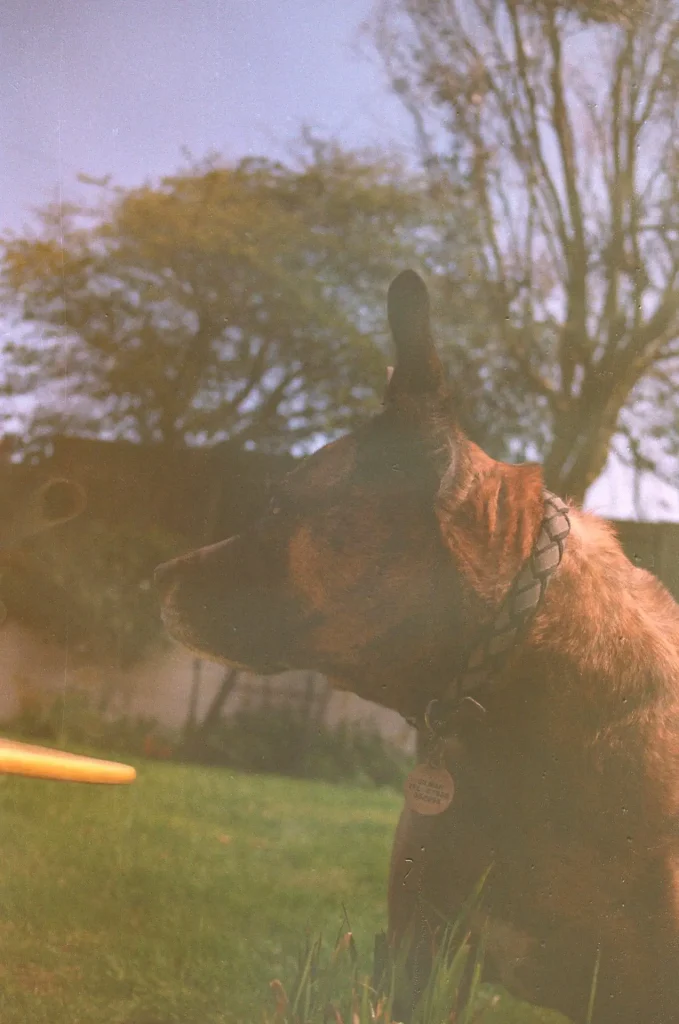
This image of blossoms is one of my favourites from this roll as I love the colour shifts in the blue of the sky. This is really where my love of experimental methods kicks in.
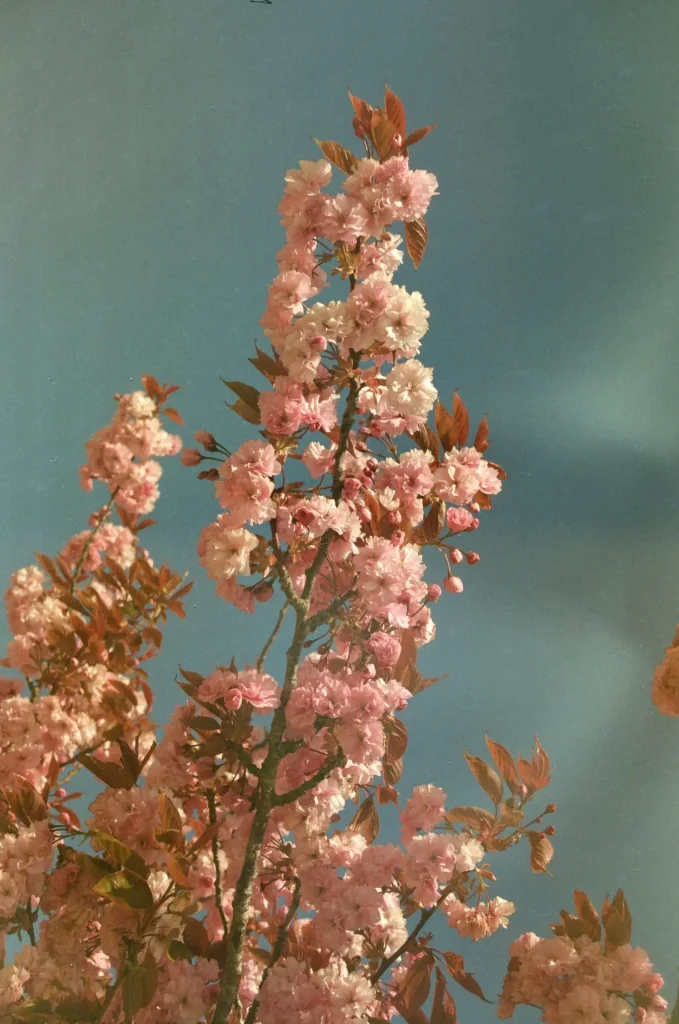
This backlit daffodil is one of my favourite images from the roll. I feel pretty certain that the unusual development has actually managed to emphasise the effect of the sun coming into the side of the image.
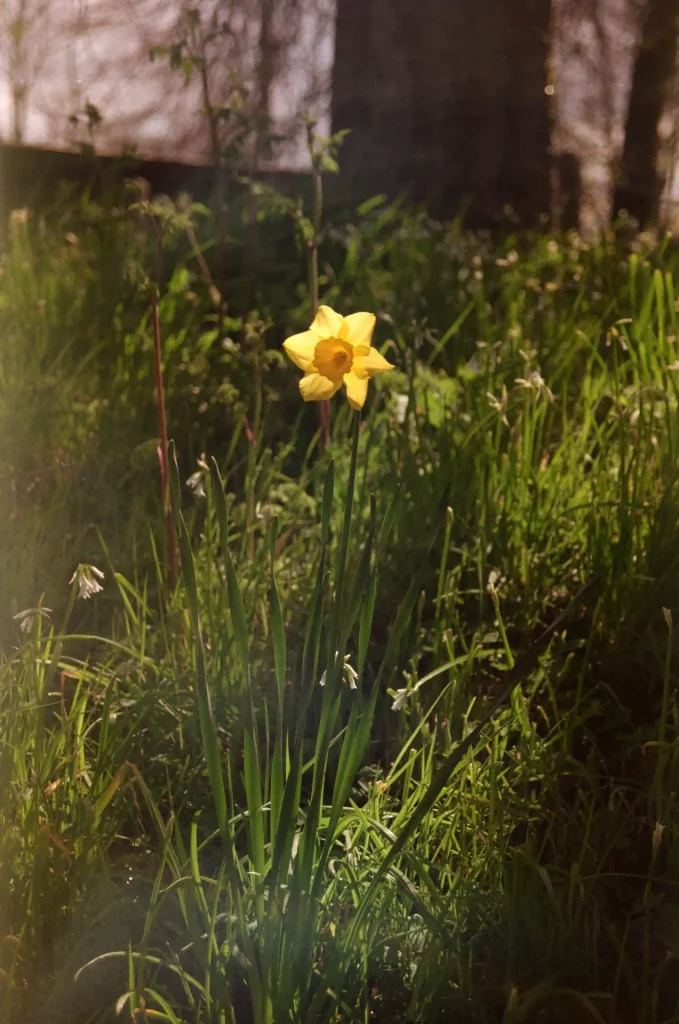
A serendipitous one now. The light leak effect caused by the development cuts at a perpendicular angle to the double yellow lines, right at the point in the image that the feather is located. To me that is perfection.
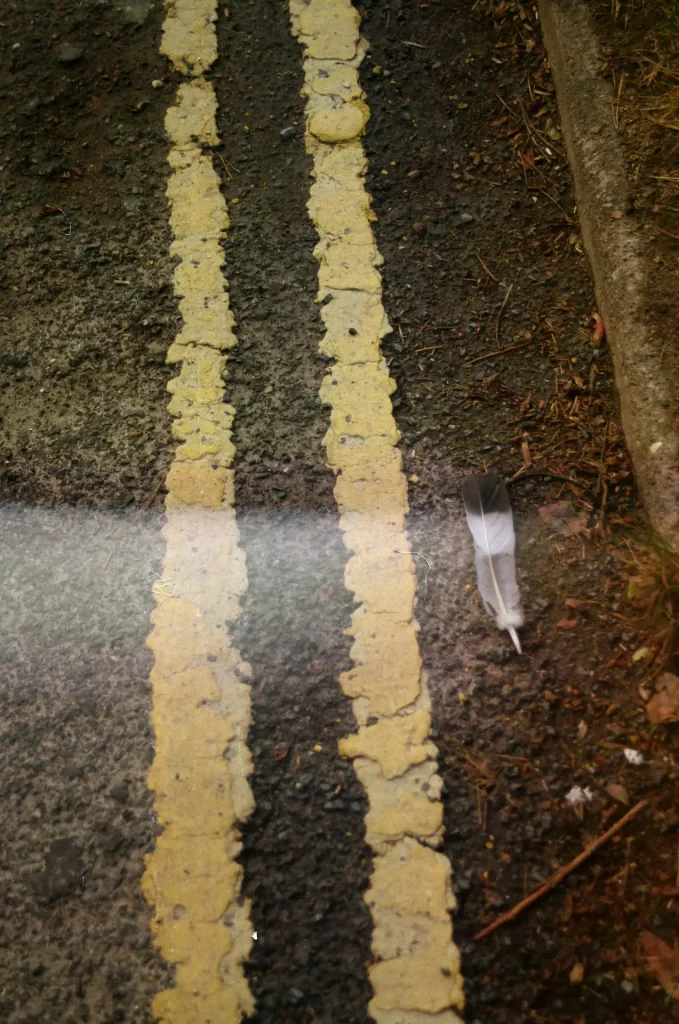
Roll two
I mentioned that this felt quite similar to roll one when just looking at the negatives but on looking at the scans what I found was that overall the images were very usable but in the particular images that showed distortion, the effect of that distortion was greater. Here are a couple of the images that came out looking completely normal.
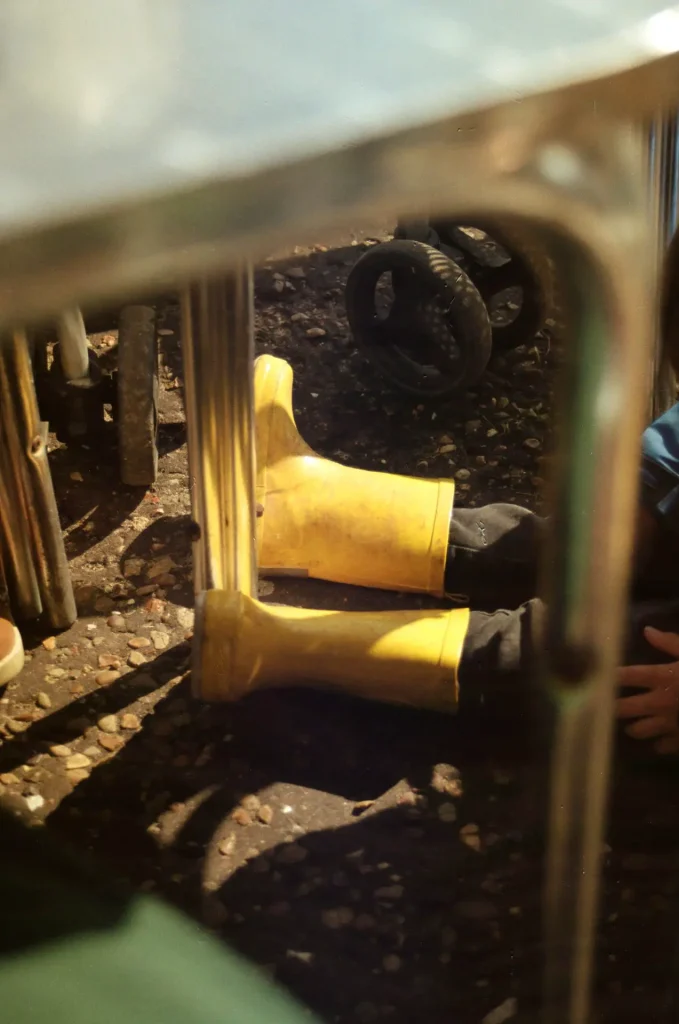
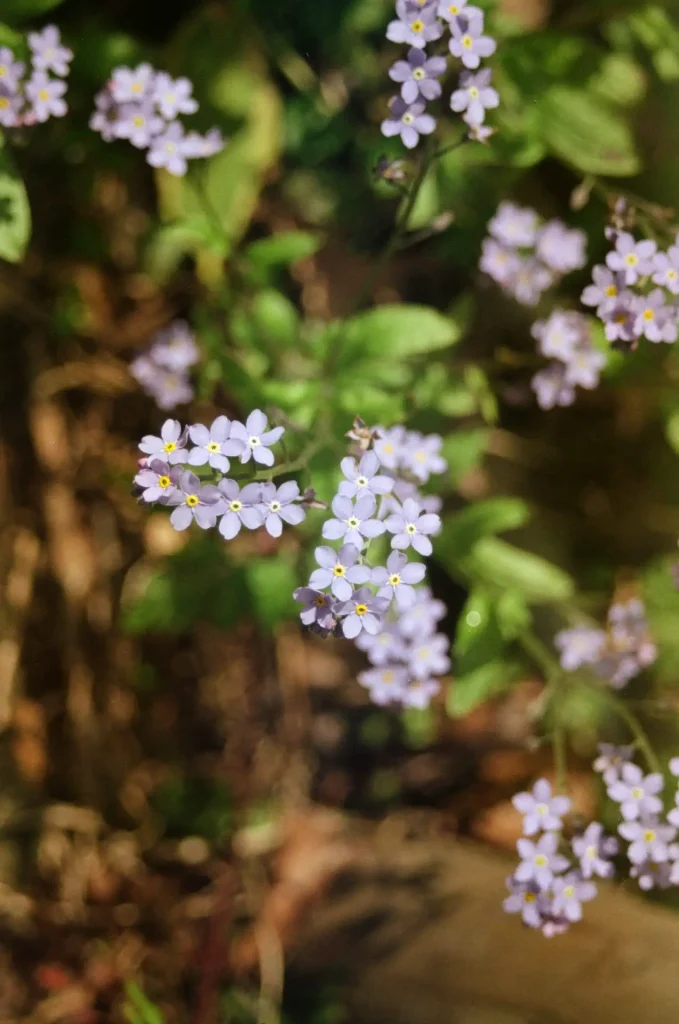
And then one showing the extra distortion.
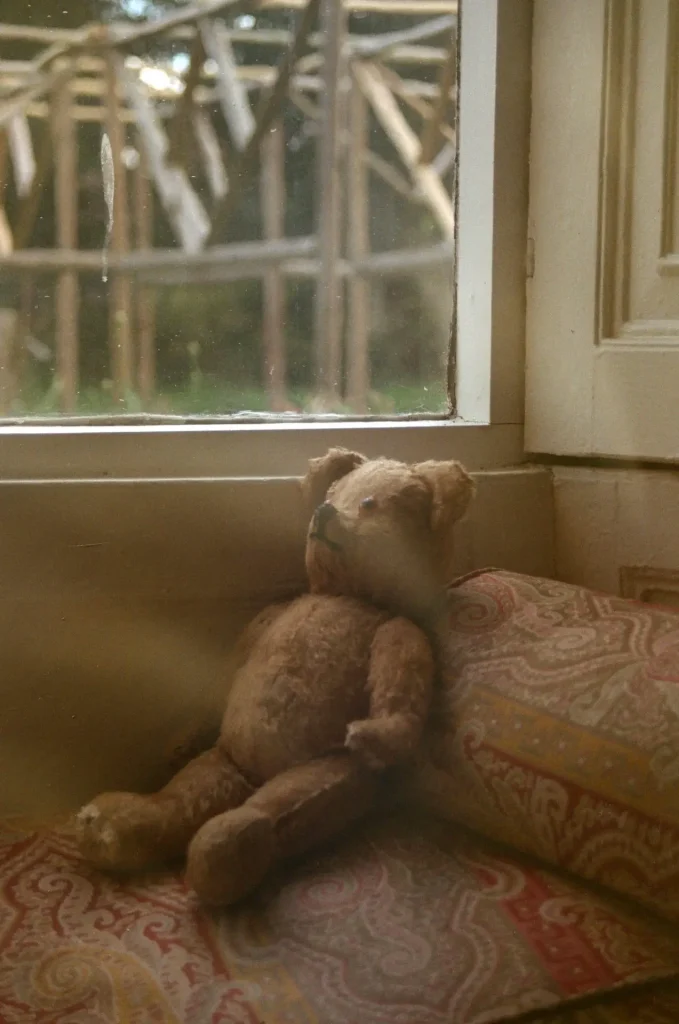
Roll three
Knowing that this was to be the most experimental development in this little bunch I decided to try something a little different and took some self-portraits, or I suppose they should be called selfies because I was holding the camera myself to take them, and I’m really pleased with the results. I definitely want to try taking other portraits and developing in this style in the future to see what results I get.
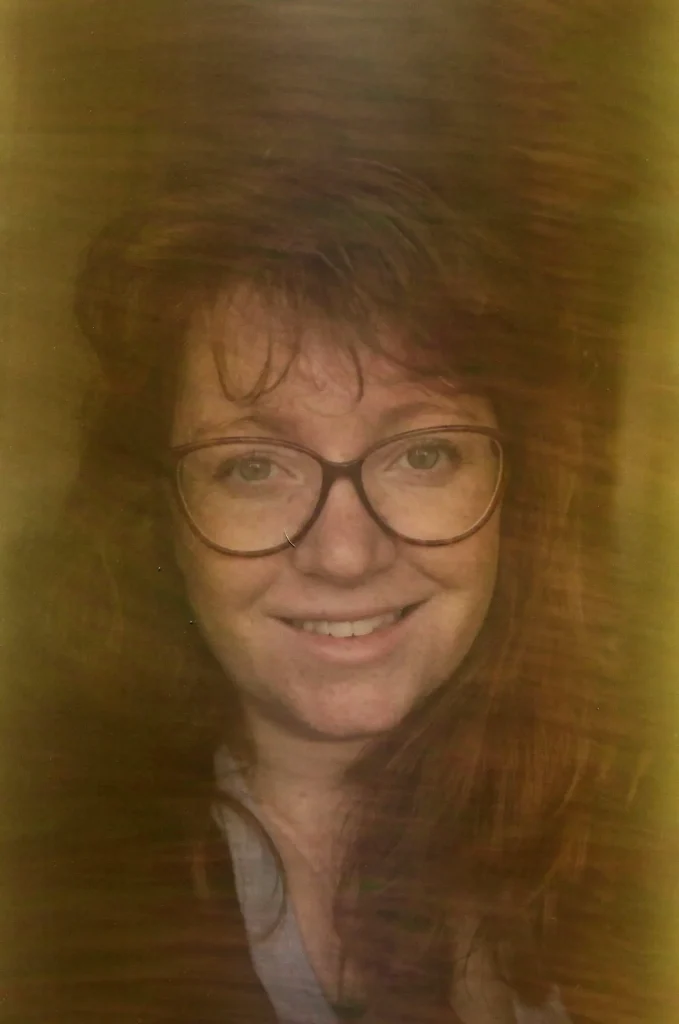
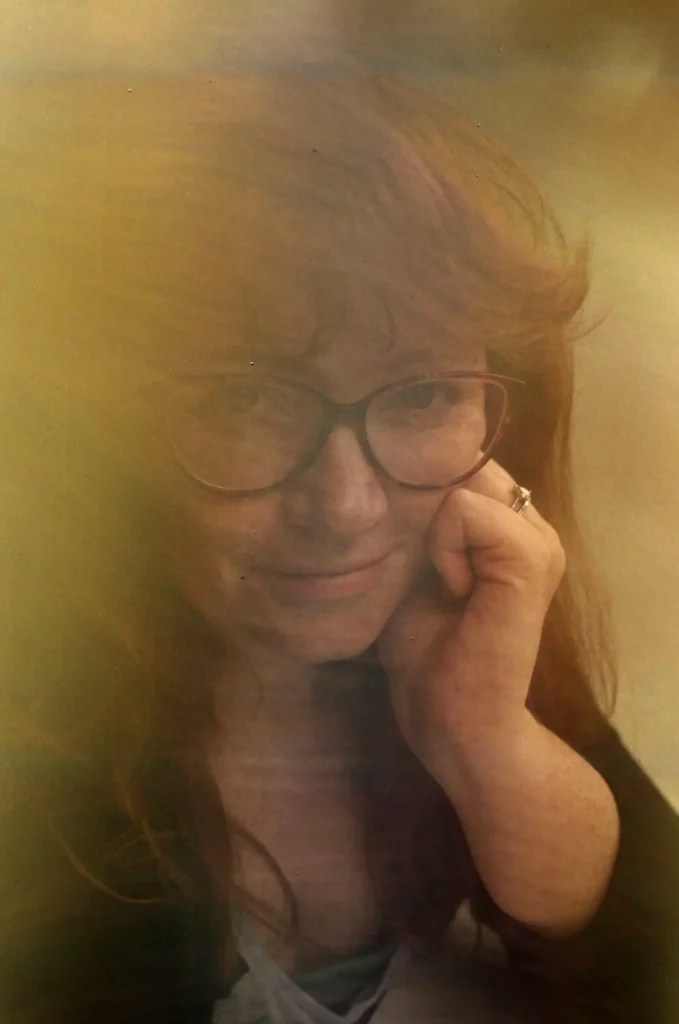
I really loved some of the distortion effects but this is a really subjective topic as some people would consider these ruined images or unusable but I was really pleased.
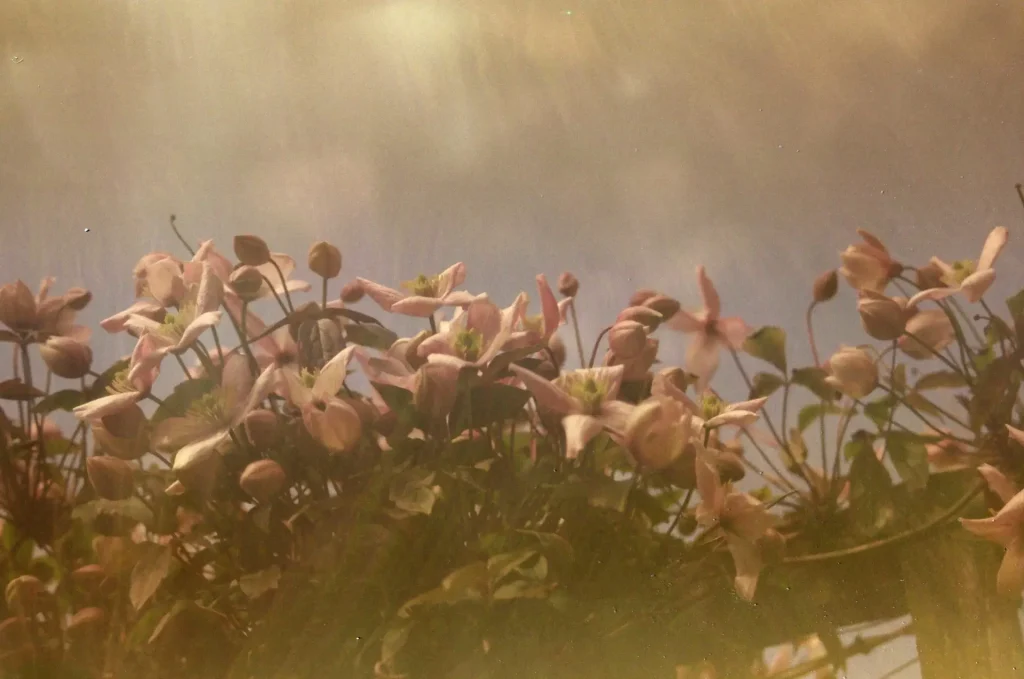
The most interesting shot for me on this roll is the one below where we have got almost a reflection of another part of the film superimposed onto the image. I have absolutely no idea how that has happened (please do let me know in the comments if you have any ideas!).
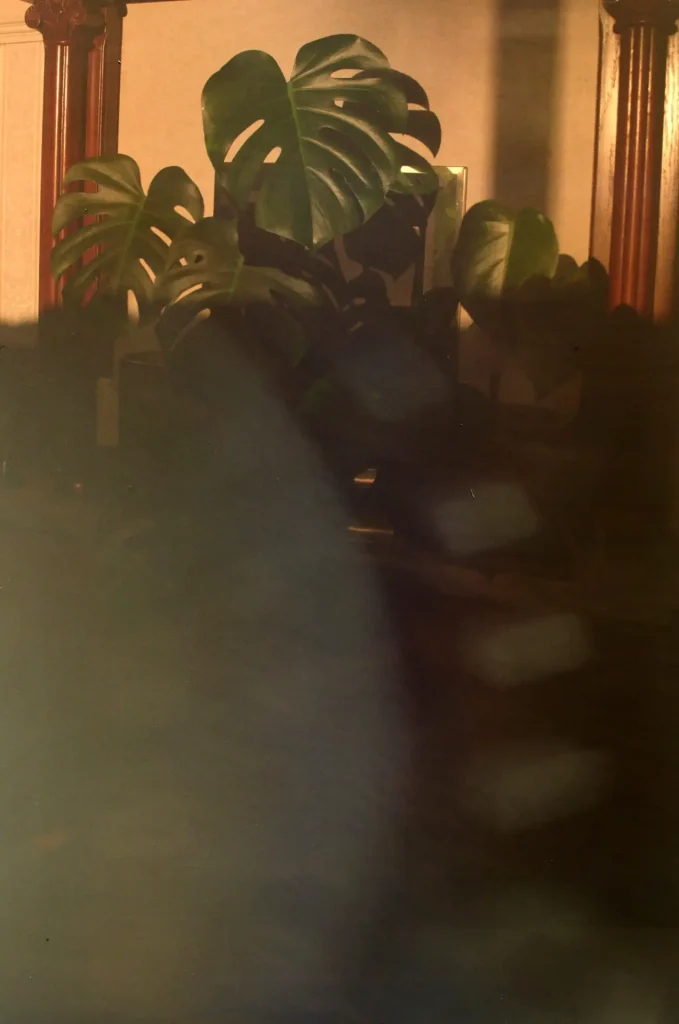
What have I learned?
I genuinely thought that the distortion would be far greater than what we see here. I mentioned in my last article that I felt that colour developing was a lot more forgiving than it is given credit for and I think this really goes to demonstrate that point. Okay it’s not consistent, but it has produced some very normal images alongside the more experimental ones. If this were a truly unforgiving practice then surely I would have next to nothing to show for the efforts?
As I mentioned before, I will be using this method again. When I have some time and a willing model (ahem, ahem any volunteers?) I would really like to try shooting some portraits and some macro flower shots and then developing at tempo one or two… Or even three and seeing how those turn out. Not yet unfortunately as I have many projects and ideas on the go but it’s certainly one I have written down and will be keeping for a later date.
As I mentioned you can watch the full series of videos on YouTube. You can also follow me on Instagram or see more of my projects on my website!
Share this post:









Comments
Tommaso Avati on Experimenting In My C-41 Developing – Dance Developing – By Holly Gilman
Comment posted: 18/11/2021
I would call them success, actually
Comment posted: 18/11/2021
Bob Janes on Experimenting In My C-41 Developing – Dance Developing – By Holly Gilman
Comment posted: 18/11/2021
On a slightly more practical level - on thinking about it, I don't think how vigorous the agitation is, should make any difference to development (unless it makes the developer keep or lose heat quicker?). The constant agitation should just bring some fresh developer to the surface of the film, I don't think it should use up the developer quickly enough for development times to be affected by being vigorous and constant...
Comment posted: 18/11/2021
Richard Politowski on Experimenting In My C-41 Developing – Dance Developing – By Holly Gilman
Comment posted: 18/11/2021
The real problem with judging results from color negative experiments is that the "print" or "positive" is an interpretation of the original (unlike slides which ARE the original) and is very subjective both technically and aesthetically. Many, but not all, of the images you show here are printed decidedly on the yellow side including and especially the vertical with the flower spike against the off-blue sky. A pre-print color-balance "correction" would make this shot look pretty "normal." There is nothing fixed or "sacred" about the first positive one sees from a scan or color negative. To be scientific one would have to "bury" gray cards in each shot and balance the positive against it to minimize subjective and even objective color bias. Remember, the color negative is the score and the print or positive is the performance, to quote Ansell Adams, who was originally referring to B&W printing; but is even closer to the point in color rendering from color negatives.
Of course, if one likes accidental fogging and other serendipitous physical events that home processing can bring . . . then right on!
Comment posted: 18/11/2021
John Earnshaw on Experimenting In My C-41 Developing – Dance Developing – By Holly Gilman
Comment posted: 19/11/2021
Comment posted: 19/11/2021
David Morgans on Experimenting In My C-41 Developing – Dance Developing – By Holly Gilman
Comment posted: 19/11/2021
Comment posted: 19/11/2021
TobyVPhoto on Experimenting In My C-41 Developing – Dance Developing – By Holly Gilman
Comment posted: 19/11/2021
Comment posted: 19/11/2021